#How To Make Cacao Mead Recipe
Explore tagged Tumblr posts
Text


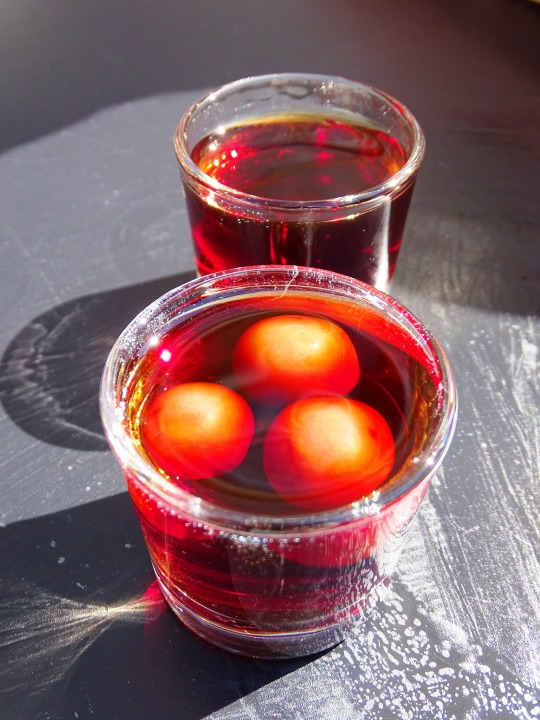

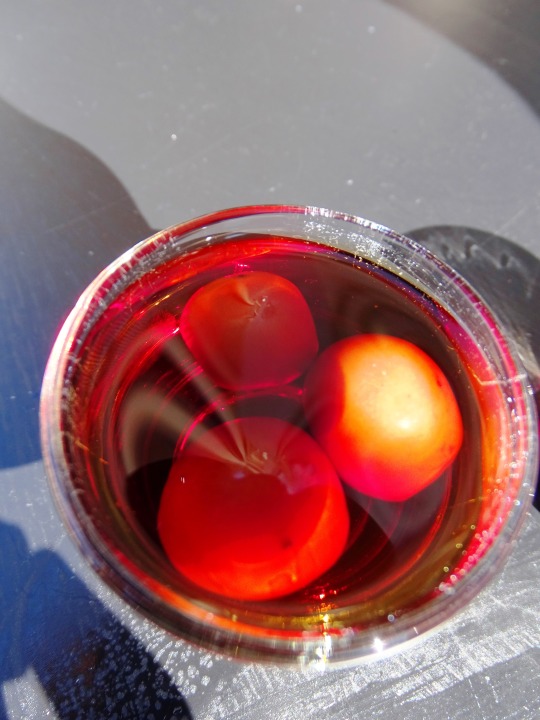
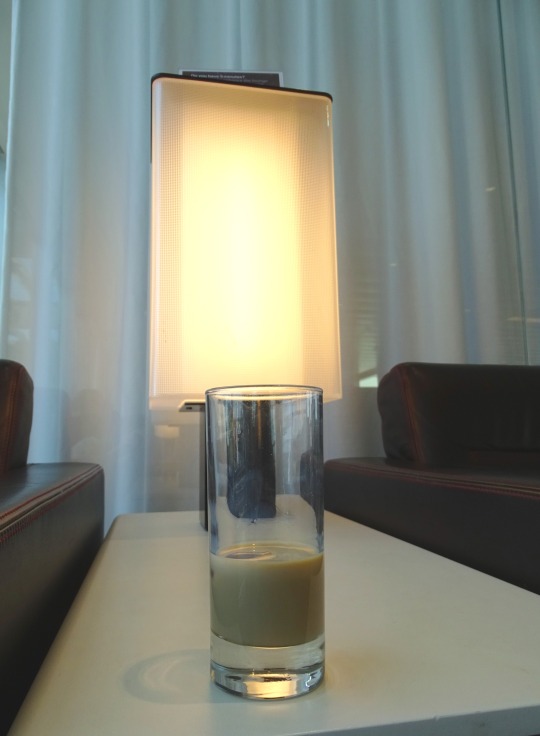
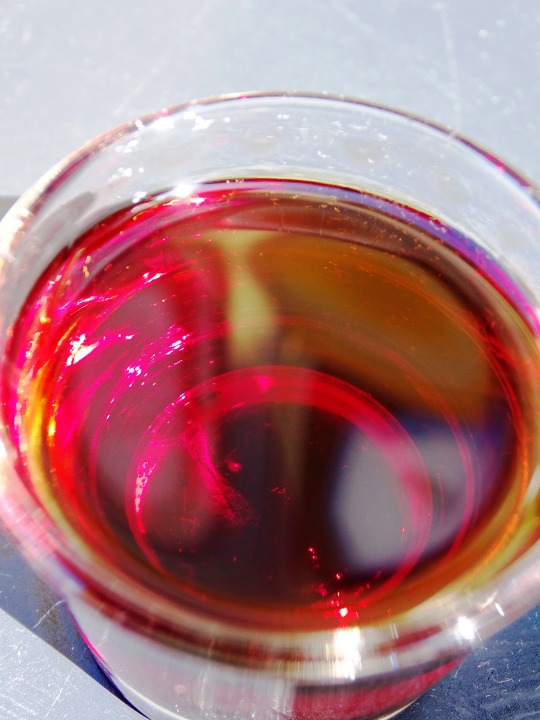

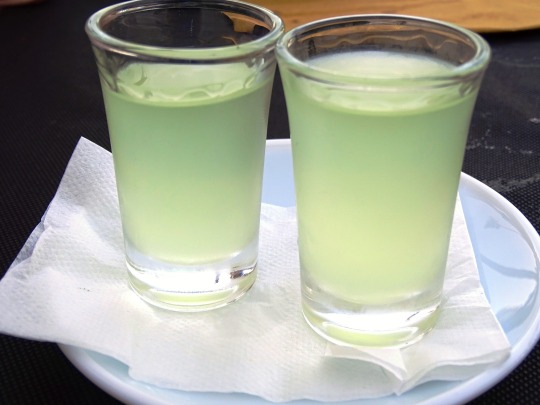
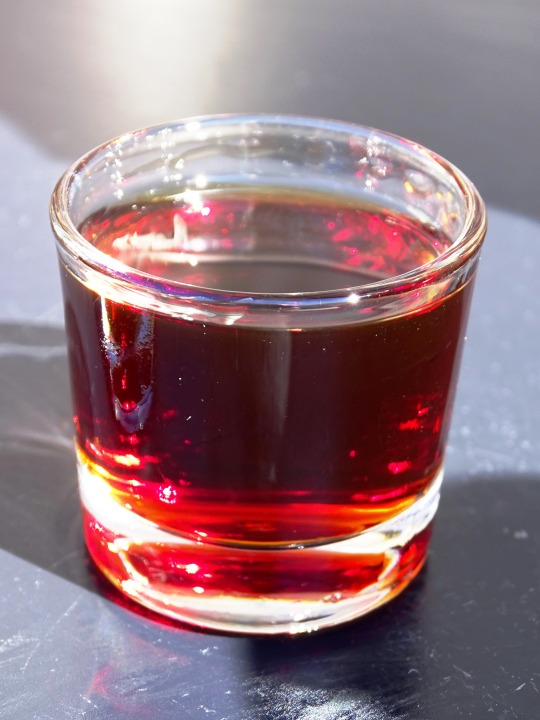

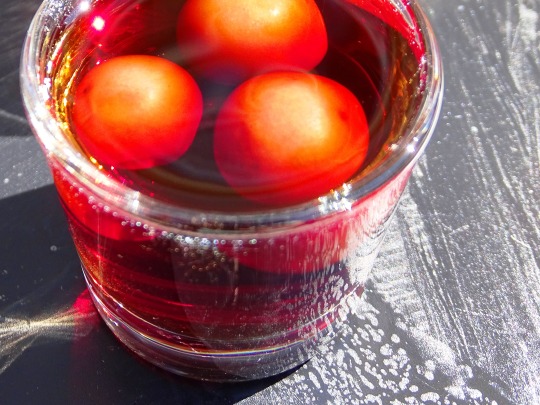
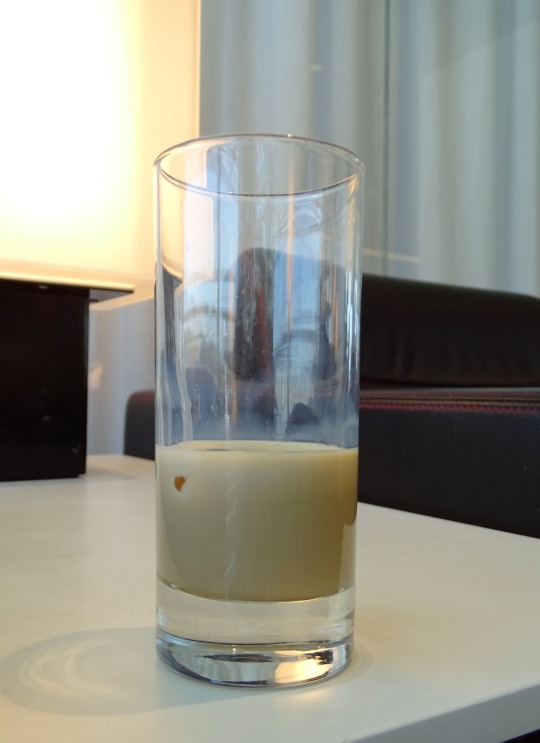


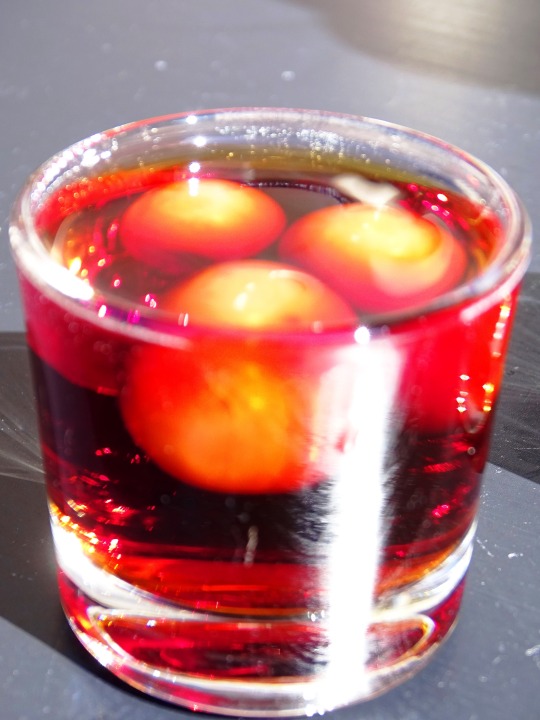
National Liqueur Day
Today we celebrate and imbibe liqueur, a distilled alcoholic beverage that is sweetened or blended with herbs, spices, flowers, nuts, cream, or fruits. The alcohol content of liqueur generally ranges from between 24 percent and 60 percent (48-120 U.S. proof) and is usually lower than that of liquor (spirits). Usually, the base spirit used to make liqueur is brandy. Liqueurs are not aged for very long, although their base spirit may be. But, there may be a resting stage to allow the flavors to blend together properly. In the United States, liqueurs are sometimes called cordials or schnapps. Technically, in the United States, the name schnapps only applies to brandies distilled from fermented fruits. Usually syrupy and sweet, liqueurs are used to make after-dinner drinks or are mixed with coffee. They may be drunk straight, poured over ice, or mixed. They are also commonly used to flavor desserts.
By 400 BC, fortified spirits were being made by the distillation of wine by the Egyptians and Greeks, who sweetened them with cinnamon and honey. These spirits were similar to today's liqueur and used ingredients that now are used to make mead. During the thirteenth century, European monks and alchemists improved upon the distillation process and created what we now would recognize as a liqueur. At the time it was mainly used for medical purposes. Today there are both generic liqueurs and proprietary liqueurs—those made by individual producers, often with a secret formula, with registered brand names. The following are some of the most common:
Generic:
Advocaat: cream liqueur.
Amaretto: almond flavor.
Apricot.
Crème d'ananas: flavored with pineapple.
Crème de cacao: flavored with cocoa and vanilla beans.
Crème de framboises: made with raspberries.
Crème de menthe: flavored with mint.
Crème de noyaux: almond-flavored; made with fruit pits; similar to amaretto.
Crème de violette: also known as parfait amour; contains oils from both violets and vanilla beans.
Kümmel: flavored with caraway seed.
Limoncello (Italy): lemon-flavored.
Sloe gin: flavored from the fruit of the blackthorn bush.
Triple sec: orange-flavored; colorless Curaçao.
Proprietary:
Baileys Irish Cream (Ireland): Irish whiskey and cream.
Bénédictine (France): first made in 1510; closely-guarded formula.
Campari (Italy): herbs and fruit.
Chartreuse (France): formula was developed in 1607; contains green and yellow plant liqueurs; spicy and aromatic flavors.
Cherry Heering (Denmark): cherry flavored.
Cointreau (France): proprietary blend of triple sec.
Crème Yvette (United States): violet flavor and color.
Curaçao: flavored from the dried peels of the green oranges from the island of Curaçao, located in the Caribbean Sea.
Danziger Goldwasser: spicy; contains tiny gold specks.
Drambuie (Britain/Scotland): Scotch whisky base; flavored with heather honey and herbs; made with a French formula that was brought to Scotland in 1745.
Forbidden Fruit (United States): brandy and grapefruit.
Grand Marnier (France): orange liqueur with cognac base; created in 1880; one of the most famous liqueurs of all time; Escoffier used it to make Crêpes Suzette; César Ritz was a fan of it and used it at his hotels.
Irish Mist (Ireland): made with Irish whiskey and honey; spicy.
Jägermeister (Germany).
Kahlúa (Mexico): coffee-flavored.
Liquore Galliano (Italy).
Midori (Japan): flavored with melon.
Sambuca (Italy): anise-flavored.
Strega (Italy).
Tia Maria (Jamaica): rum as base spirit; coffee-flavored.
Van der Hum (South Africa): spicy; aromatic.
How to Observe National Liqueur Day
Celebrate the day drinking liqueur. Use it to make an after-dinner drink, enjoy it straight, or pour it over ice. There are a countless amount of liqueurs and recipes that go with them that you could try. You could also use liqueurs to make a dessert. You could even use the day to learn how to make your own liqueurs. If you don't drink, you could still make or bake a dessert with liqueur for someone else, or try your hand at making homemade liqueur for a friend to try.
Source
#Fuzzy Navel#Baileys Irish Cream#National Liqueur Day#NationalLiqueurDay#16 October#Limoncello#Spain#Portugal#summer 2021#original photography#don't drink and drive#Ginjinha#Ginja#Ginjinha Espinheira#Lisbon#Mojácar#Lisboa#España#travel#vacation#tourist attraction#sour cherry#Southern Europe#Iberia#Canada#Switzerland
4 notes
·
View notes
Photo

New Post has been published on http://www.buildthebottle.com/2020/07/06/cacao-mead-recipe/
Cacao Mead Recipe D.I.Y.
Cacao Mead Recipe D.I.Y.
Hey Guys and Gals!
Are you looking for an awesome Cacao Mead Recipe? You now have no reason to look any further; you have just found what you have been looking for!
Ingredients:
3 lbs of amber honey
1 gallons water
Step 2
Lalvin 71B Narbonne – 1 packet
yeast nutrient
Step 3
1 1/2 tablespoons of cacao nibs
1 oz. Dutch process cocoa
1/3 vanilla bean
Directions
Step 1
Boil the water and stir in your honey and then let cool.
Pour into your carboy your honey water go to step 2.
Step 2
yeast and nutrient.
Wait till the mead has cooled.
Prepare a 1L yeast starter by stirring the yeast into the water then let mixture stand in cup for 15 minutes.
Make sure it is bubbling and then you will add it to your beer after the beer has cooled.
Add the yeast at the temperature recommended on the packet together with yeast nutrient .
After 24-48 hours it should start bubbling.
Fermentation Through Bottling Your Cacao Mead Recipe
Make sure your primary has about a gallon of water in it otherwise fill it now.
Just be careful that your carboy is around a third empty leaving space for frothing and foaming.
Let it ferment. Rack the mead off the fruit to your secondary carboy after 6-7 days when the frothing has slowed down.
Let ferment for 1-2 months or more in the secondary then bottle.
Step 3
Add cacao nibs, Dutch process cocoa, and vanilla bean to carboy.
Let sit for 3-4 days. and then bottle. You can use a cheesecloth to filter.
Congratulations, You Have Completed Making this Awesome Cacao Mead!
You now need a bottle and a label which are cool enough to compliment your hard work. Honestly, if you put it into a cheap bottle, people will make fun of you. BUT, if it looks good, people will rave about it!
Notes on Utensils and Ingredients
Glass is always preferable when working with strong alcohol. Avoid plastic as much as possible.
Use organic ingredients to avoid pesticide residues.
You Like Our Recipes So Try Our Vodka
YelloVodka.com
Other Great Recipes for You to Check Out!
Pumpkin Liqueur Recipe D.I.Y.
Jackfruit Liqueur Recipe D.I.Y.
Cucumber Gin Liqueur Recipe
Carrot Liqueur Recipe D.I.Y.
Wall Germander Liqueur Recipe
Plum Liqueur Recipe D.I.Y.
Sour Apple Cinnamon Liqueur recipe D.I.Y.
Plum Liqueur Recipe D.I.Y.
Sour Apple Cinnamon Liqueur recipe D.I.Y.
From Our Sister Blog Terebelo.com
Marketing With Optimism
The Marketing Of My Vodka Named Yello
Sales Pitch Listen Don’t Talk
What Is In A Handshake
Be Well Rested Before A Meeting
You Will Find Great Analysis At tastethebottle.com Of Yor Favorite Bottle
To spirits and cheers,
Binyomin Terebelo, Master Distiller and Drinkoligist
Image by gate74 from Pixabay
#Cacao Bean Mead#Cacao Bean Mead Recipe#Cacao Mead Recipe#Cacao Mead Recipe D.I.Y.#How To Make Cacao Mead Recipe
0 notes
Note
Hey, *really* bizarrely specific worldbuilding question but like- how do you think different Empires regions and areas make different drinks, and what do you think they’d be?
The thought started with me with like, Turkish coffee equivalent with the little pot and hot sand and swirling it around to boil the drink and it made me think of Pixandria up until I was reminded that Mezalea also has some *very* similar feeling things to the same area and vibes. Which made the thought kinda snowball a bit 😅. Like, would Pixandria make use of the abundance of honey to produce mead, or would that be more in line with Smallholding? Would they both have it, but simply have different varieties of it due to regional differences, or would Pearls Empire favor other fermentation techniques? Would Rivendell make use of sweet berries to sweeten their tea? I’ve heard you can make tea with pine needles, but also that poppies can make something soothing and sleep inducing, which also feels like a fun thing to indulge in. And those thoughts are *still going* a mile a minute so just- guess I wanted to ask you about it. It’s fun
hello anon!
sorry it took me so long to respond to this--between working on TKS, other rcu projects, and some Minecraft server shenanigans, i've let it pass me by for a bit too long!
i love ideas like this because i feel that they truly enrich a fictional culture; things like region-specific food/drink, clothing, folktales, dances, holidays, staple exports, etc. can add life and depth to a fictional society far beyond surface level. i encourage you, when thinking about this, to take inspiration from real life cultures (as you did with the Turkish coffee), but don't feel like you must make every idea match some real world equivalent--fictional societies can be their own thing!
as far as drinks in the empires, i'll quickly go down the list here of some ideas i've had about it:
-Pixandria: obviously mead, given that one of their biggest exports is honey. i feel like Pixandrian mead would be dry and sort of tart, as they don't have access to a ton of sugar to sweeten it. probably aged in acacia barrels in caves near the river to keep it temperature controlled.
-Smallhold: i agree with you that they'd also produce some mead, although not as prolifically as Pixandria since they're smaller. their mead would be much sweeter, as they have more access to sugarcane, and they could probably make flavored varieties as well. i feel that beer would also be huge for them since they grow so much wheat. Pearl built a brewery, so...they definitely have the equipment for proper brewing.
-Mythland: a personal headcanon of mine is that Mythland has a signature whiskey, very strong, which they make from grain crops imported from Smallhold. it's aged in dark oak barrels kept in underground cellars.
-Grimlands: saturn and i decided that the Grimlands manufacture sweet berry wine, though it mostly comes from the smaller more farming-oriented settlements outside the tech-heavy capital of Eastvale. they also drink the juice unfermented.
-Crystal Cliffs: they use the leaves of the sweet berry plant to brew an herbal tea with a pleasant fruity taste.
-Undergrove: gnome beer! Shrub's family's own recipe, although altered a bit to account for Overworld crop differences. it does have mushrooms in (not many, though).
-Lost Empire: drinking chocolate made from the jungle's cacao beans, as well as a sweet melon wine.
-Rivendell: i love the idea of pine needle tea (which is definitely a thing)! poppies, which contain opium, can definitely be used to add a calming effect, though you do have to be careful with the concentration.
-Overgrown: all sorts of herbal teas and tonics! they also have Fae mead, which is crazy strong.
-Cod Empire: they have a blue orchid tea, although it tastes weird and mostly only the codfolk like it.
-Ocean Empire: because they're a fully aquatic empire, they don't have many drinks--after all, they live in water! however, some of them are beginning to enjoy Mezalean staples like coffee.
-Mezalea: definitely coffee, brewed in the Turkish style--it fits Joel's vibe of constant energy, lmao. also an azalea tea, made from the leaves and flowers, which is slightly toxic, but Mezaleans have a built-up immunity to the stuff (i love this headcanon and had to use it).
thanks so much for the ask! i hope this was a satisfying answer!
51 notes
·
View notes
Text


















National Liqueur Day
Today we celebrate and imbibe liqueur, a distilled alcoholic beverage that is sweetened or blended with herbs, spices, flowers, nuts, cream, or fruits. The alcohol content of liqueur generally ranges from between 24 percent and 60 percent (48-120 U.S. proof) and is usually lower than that of liquor (spirits). Usually, the base spirit used to make liqueur is brandy. Liqueurs are not aged for very long, although their base spirit may be. But, there may be a resting stage to allow the flavors to blend together properly. In the United States, liqueurs are sometimes called cordials or schnapps. Technically, in the United States, the name schnapps only applies to brandies distilled from fermented fruits. Usually syrupy and sweet, liqueurs are used to make after-dinner drinks or are mixed with coffee. They may be drunk straight, poured over ice, or mixed. They are also commonly used to flavor desserts.
By 400 BC, fortified spirits were being made by the distillation of wine by the Egyptians and Greeks, who sweetened them with cinnamon and honey. These spirits were similar to today's liqueur and used ingredients that now are used to make mead. During the thirteenth century, European monks and alchemists improved upon the distillation process and created what we now would recognize as a liqueur. At the time it was mainly used for medical purposes. Today there are both generic liqueurs and proprietary liqueurs—those made by individual producers, often with a secret formula, with registered brand names. The following are some of the most common:
Generic:
Advocaat: cream liqueur.
Amaretto: almond flavor.
Apricot.
Crème d'ananas: flavored with pineapple.
Crème de cacao: flavored with cocoa and vanilla beans.
Crème de framboises: made with raspberries.
Crème de menthe: flavored with mint.
Crème de noyaux: almond-flavored; made with fruit pits; similar to amaretto.
Crème de violette: also known as parfait amour; contains oils from both violets and vanilla beans.
Kümmel: flavored with caraway seed.
Limoncello (Italy): lemon-flavored.
Sloe gin: flavored from the fruit of the blackthorn bush.
Triple sec: orange-flavored; colorless Curaçao.
Proprietary:
Baileys Irish Cream (Ireland): Irish whiskey and cream.
Bénédictine (France): first made in 1510; closely-guarded formula.
Campari (Italy): herbs and fruit.
Chartreuse (France): formula was developed in 1607; contains green and yellow plant liqueurs; spicy and aromatic flavors.
Cherry Heering (Denmark): cherry flavored.
Cointreau (France): proprietary blend of triple sec.
Crème Yvette (United States): violet flavor and color.
Curaçao: flavored from the dried peels of the green oranges from the island of Curaçao, located in the Caribbean Sea.
Danziger Goldwasser: spicy; contains tiny gold specks.
Drambuie (Britain/Scotland): Scotch whisky base; flavored with heather honey and herbs; made with a French formula that was brought to Scotland in 1745.
Forbidden Fruit (United States): brandy and grapefruit.
Grand Marnier (France): orange liqueur with cognac base; created in 1880; one of the most famous liqueurs of all time; Escoffier used it to make Crêpes Suzette; César Ritz was a fan of it and used it at his hotels.
Irish Mist (Ireland): made with Irish whiskey and honey; spicy.
Jägermeister (Germany).
Kahlúa (Mexico): coffee-flavored.
Liquore Galliano (Italy).
Midori (Japan): flavored with melon.
Sambuca (Italy): anise-flavored.
Strega (Italy).
Tia Maria (Jamaica): rum as base spirit; coffee-flavored.
Van der Hum (South Africa): spicy; aromatic.
How to Observe National Liqueur Day
Celebrate the day drinking liqueur. Use it to make an after-dinner drink, enjoy it straight, or pour it over ice. There are a countless amount of liqueurs and recipes that go with them that you could try. You could also use liqueurs to make a dessert. You could even use the day to learn how to make your own liqueurs. If you don't drink, you could still make or bake a dessert with liqueur for someone else, or try your hand at making homemade liqueur for a friend to try.
Source
#Riverside Lemonade#Fuzzy Navel#Baileys Irish Cream#National Liqueur Day#NationalLiqueurDay#16 October#Limoncello#Spain#Portugal#summer 2021#original photography#don't drink and drive#Ginjinha#Ginja#Ginjinha Espinheira#Lisbon#Mojácar#Lisboa#España#travel#vacation#tourist attraction#sour cherry#Southern Europe#Iberia#Canada#Switzerland
1 note
·
View note
Photo










National Liqueur Day
Today we celebrate and imbibe liqueur, a distilled alcoholic beverage that is sweetened or blended with herbs, spices, flowers, nuts, cream, or fruits. The alcohol content of liqueur generally ranges from between 24 percent and 60 percent (48-120 U.S. proof) and is usually lower than that of liquor (spirits). Usually, the base spirit used to make liqueur is brandy. Liqueurs are not aged for very long, although their base spirit may be. But, there may be a resting stage to allow the flavors to blend together properly. In the United States, liqueurs are sometimes called cordials or schnapps. Technically, in the United States, the name schnapps only applies to brandies distilled from fermented fruits. Usually syrupy and sweet, liqueurs are used to make after-dinner drinks or are mixed with coffee. They may be drunk straight, poured over ice, or mixed. They are also commonly used to flavor desserts.
By 400 BC, fortified spirits were being made by the distillation of wine by the Egyptians and Greeks, who sweetened them with cinnamon and honey. These spirits were similar to today's liqueur and used ingredients that now are used to make mead. During the thirteenth century, European monks and alchemists improved upon the distillation process and created what we now would recognize as a liqueur. At the time it was mainly used for medical purposes. Today there are both generic liqueurs and proprietary liqueurs—those made by individual producers, often with a secret formula, with registered brand names. The following are some of the most common:
Generic:
Advocaat: cream liqueur.
Amaretto: almond flavor.
Apricot.
Crème d'ananas: flavored with pineapple.
Crème de cacao: flavored with cocoa and vanilla beans.
Crème de framboises: made with raspberries.
Crème de menthe: flavored with mint.
Crème de noyaux: almond-flavored; made with fruit pits; similar to amaretto.
Crème de violette: also known as parfait amour; contains oils from both violets and vanilla beans.
Kümmel: flavored with caraway seed.
Limoncello (Italy): lemon-flavored.
Sloe gin: flavored from the fruit of the blackthorn bush.
Triple sec: orange-flavored; colorless Curaçao.
Proprietary:
Baileys Irish Cream (Ireland): Irish whiskey and cream.
Bénédictine (France): first made in 1510; closely-guarded formula.
Campari (Italy): herbs and fruit.
Chartreuse (France): formula was developed in 1607; contains green and yellow plant liqueurs; spicy and aromatic flavors.
Cherry Heering (Denmark): cherry flavored.
Cointreau (France): proprietary blend of triple sec.
Crème Yvette (United States): violet flavor and color.
Curaçao: flavored from the dried peels of the green oranges from the island of Curaçao, located in the Caribbean Sea.
Danziger Goldwasser: spicy; contains tiny gold specks.
Drambuie (Britain/Scotland): Scotch whisky base; flavored with heather honey and herbs; made with a French formula that was brought to Scotland in 1745.
Forbidden Fruit (United States): brandy and grapefruit.
Grand Marnier (France): orange liqueur with cognac base; created in 1880; one of the most famous liqueurs of all time; Escoffier used it to make Crêpes Suzette; César Ritz was a fan of it and used it at his hotels.
Irish Mist (Ireland): made with Irish whiskey and honey; spicy.
Jägermeister (Germany).
Kahlúa (Mexico): coffee-flavored.
Liquore Galliano (Italy).
Midori (Japan): flavored with melon.
Sambuca (Italy): anise-flavored.
Strega (Italy).
Tia Maria (Jamaica): rum as base spirit; coffee-flavored.
Van der Hum (South Africa): spicy; aromatic.
How to Observe National Liqueur Day
Celebrate the day drinking liqueur. Use it to make an after-dinner drink, enjoy it straight, or pour it over ice. There are a countless amount of liqueurs and recipes that go with them that you could try. You could also use liqueurs to make a dessert. You could even use the day to learn how to make your own liqueurs. If you don't drink, you could still make or bake a dessert with liqueur for someone else, or try your hand at making homemade liqueur for a friend to try.
Source
#National Liqueur Day#NationalLiqueurDay#16 October#Limoncello#Spain#Portugal#summer 2021#original photography#don't drink and drive#Ginjinha#Ginja#Ginjinha Espinheira#Lisbon#Mojácar#Lisboa#España#travel#vacation#tourist attraction#sour cherry#Southern Europe#Iberia
0 notes